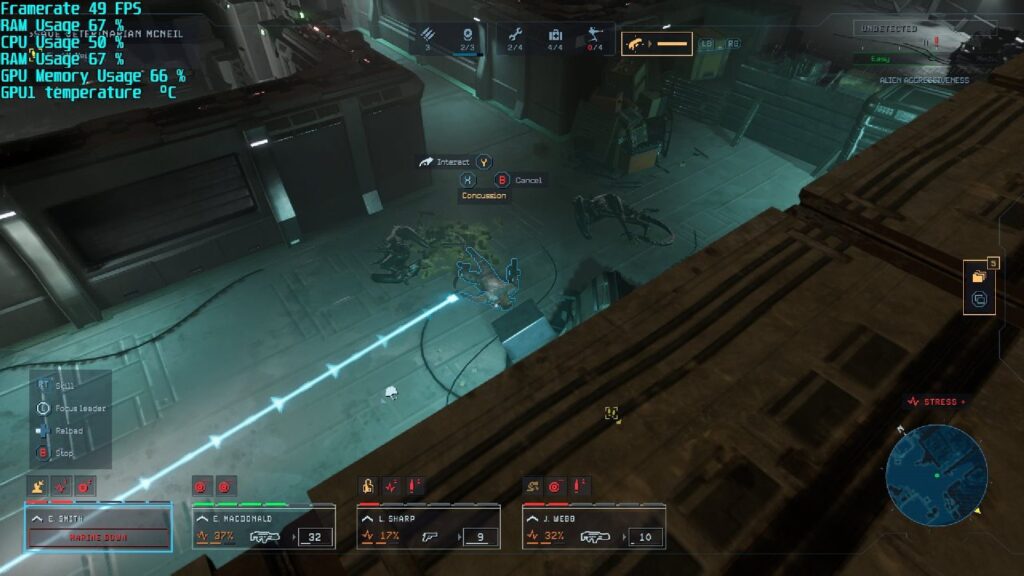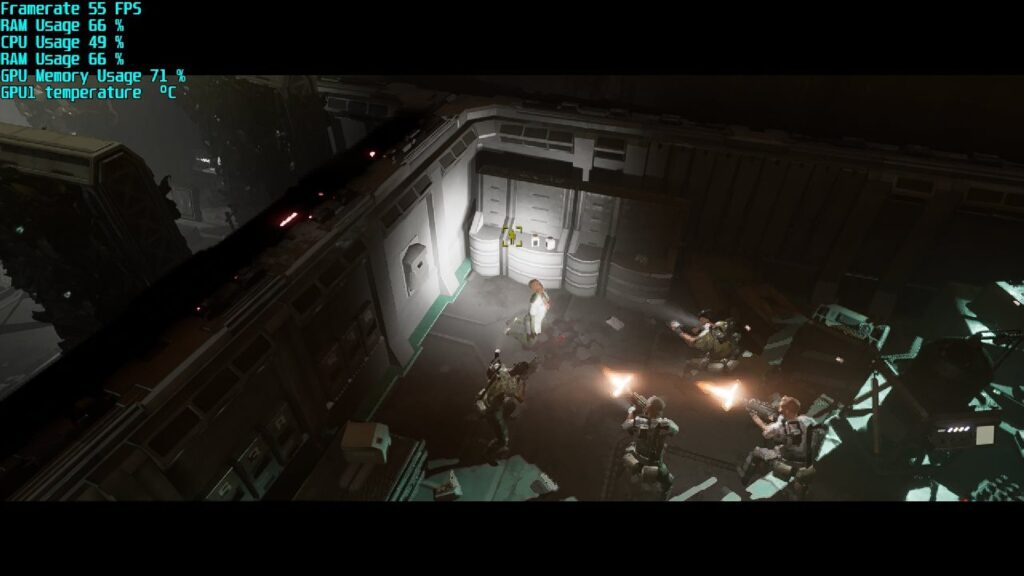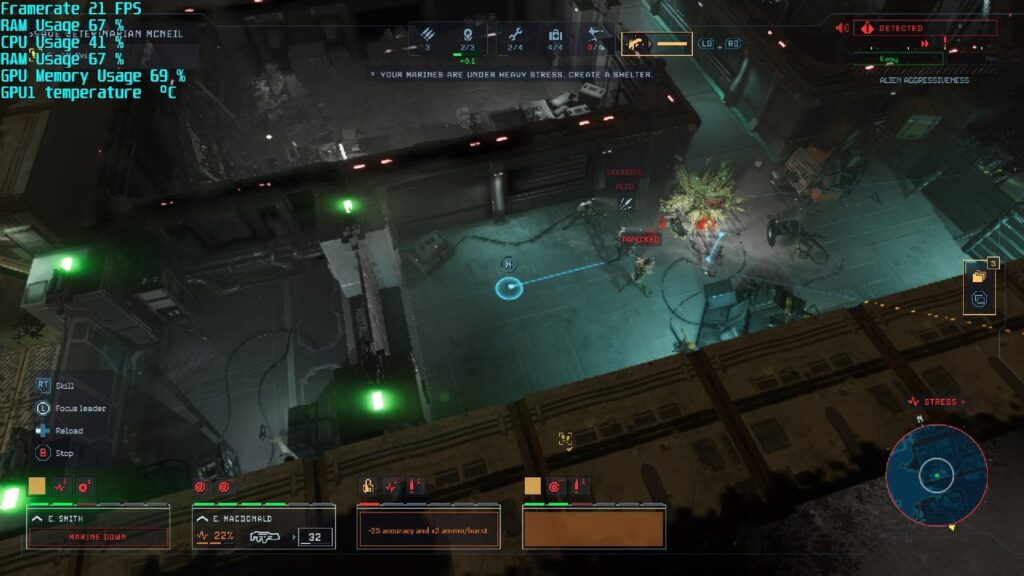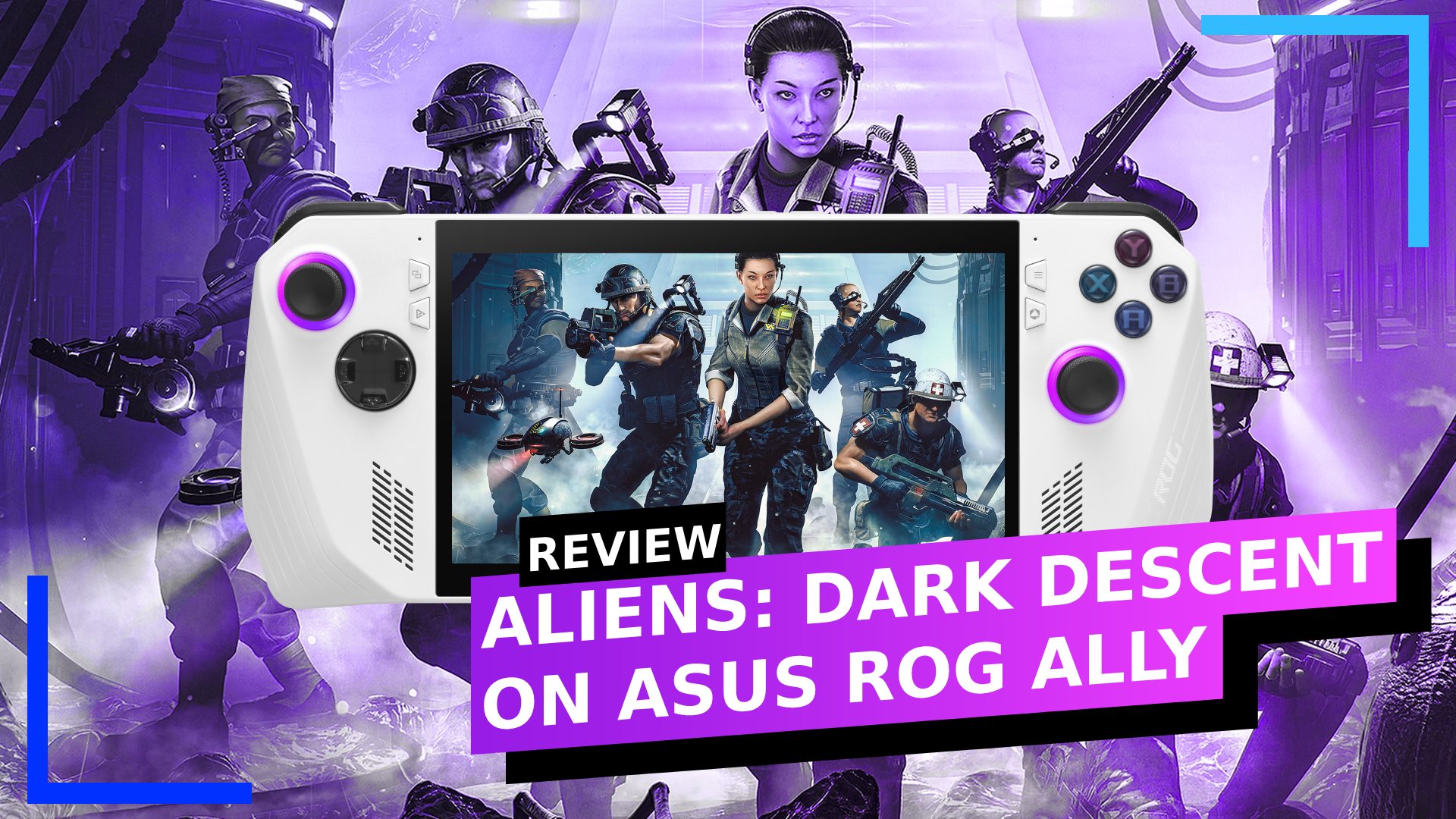Performance

Aliens: Dark Descent on the ASUS ROG Ally has the same problems as the Steam Deck version. The tutorial section runs at a constantly changing framerate but once you make it through and start venturing into the more open areas, that’s when things pick up. It’s not all plain sailing, though.
Out in the main game the framerate can’t seem to sit right. Sometimes it’s 60 frames per second, other times it’s in the low 40s, and at its worst, high 20s.
It’s clear Aliens: Dark Descent hasn’t been fully optimized for handheld devices yet, and that’s fine. Not every game is going to work on handhelds like the Ally. But what I find interesting is even with the visuals neutered, Aliens: Dark Descent can’t seem to hit a constant 30 on the Ally.
With the Steam Deck version, I turned everything down to low (bar the anti-aliasing) and switched FSR to performance mode. You’d expect, given the greater power of the Ally, there would be some gains, but that’s not really the case. You can get higher framerates, but it’s not stable enough to be a huge win. When you’re dropping down to 27 frames during a firefight, the extra power doesn’t count for much.
I’m going to keep an eye on this one because I do think Aliens: Dark Descent could run smoother than it currently is if the developers decide to step in. I believe with some optimizations, a smooth 30 is almost certainly possible.
Recommended Settings

The good news is because of the frame drops, there’s no reason to use Turbo Mode. It doesn’t solve anything. Performance Mode, which runs at 20.9 watts, is more than enough.
Another downside, however, is that 20.9 watts of power is a higher draw than the Steam Deck’s 16.2 watts. The difference in battery up time here is one hour and 54 minutes on the ASUS ROG Ally versus two hours and 24 minutes on the Steam Deck.
The Ally is normally always going to come second to the Steam Deck in terms of battery life but that extra drain should mean better performance. In Aliens: Dark Discent’s case, that missing 30 minutes of battery life doesn’t really translate into anything worthwhile.
In terms of settings, crank everything down low while keeping the anti-aliasing high. Trust me, you’ll need it.
| Aliens: Dark Descent (In-game Settings) | |
| Preset | Low |
| Anti-Aliasing | High |
| Texture | Low |
| Effects | Low |
| Post Process | Low |
| Geometry | Low |
| Shadow | Low |
| Foliage | Low |
| Shading | Low |
| Display | |
| AMD Fidelity FX Super Resolution | Performance |
| Steam Deck Settings (Quick Access Menu) | |
| Profile: Turbo 15w (30 to 50 frames per second) | Estimated Battery Life: 1 Hour 54 Minutes |
| Docked Mode Resolution: 1280×720 | FSR: On (Docked Mode) |
| GPU Usage: 68% | CPU Usage: 18% |
| RAM Usage: 65% | Temperature: 73 degrees |
| Performance Rating: 2/5 | |
With the XG Mobile Attached

As with most of my use cases, attaching the RTX 4090 XG Mobile thoroughly changes the experience. With the XG Mobile attached I was able to run Aliens: Dark Descent at a smooth 60 frames per second at all times with the graphics set to max.
Verdict

I’m a little disappointed with the performance on the ASUS ROG Ally. Given the extra power, I was hoping for a slightly smoother experience. Surely the extra battery drain has to amount to something? Nope.
Aliens: Dark Descent is still a solid game I had fun with, but on the base ROG Ally it’s harder to recommend without some caveats. On the Steam Deck, those frame drops are more understandable. It’s a Windows game running on Linux on a device it wasn’t designed for. It makes sense.
But on the Ally, even with the extra power, it’s not smooth enough to justify a purchase just yet.
Disclosure: All screenshots captured on ASUS ROG Ally hardware. | Review code provided by the publisher. | To learn more about our review policy click here. | Alternatively, click here to find out why you can trust me.

